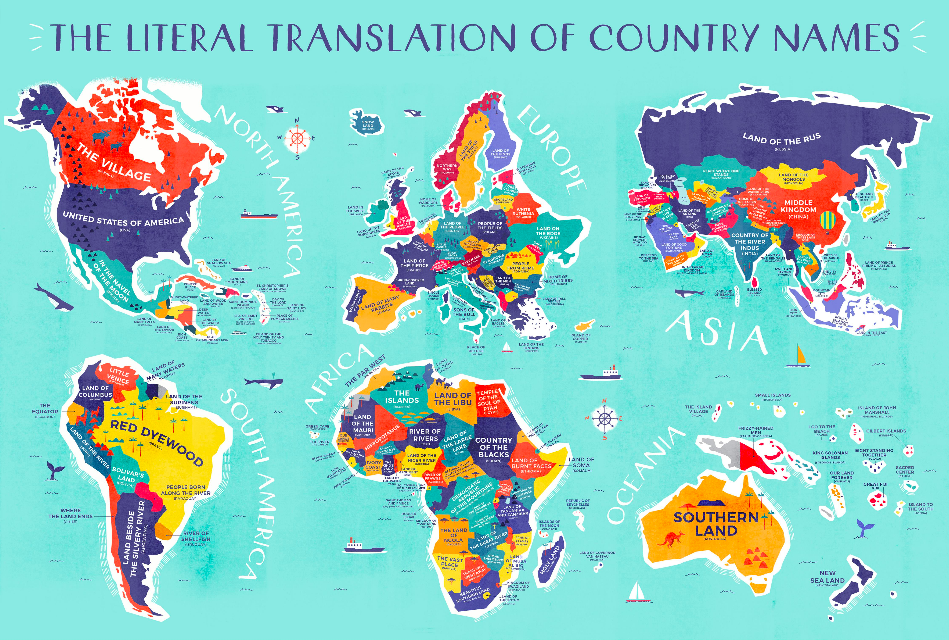Ever wondered what a country’s name means? This map can answer that.
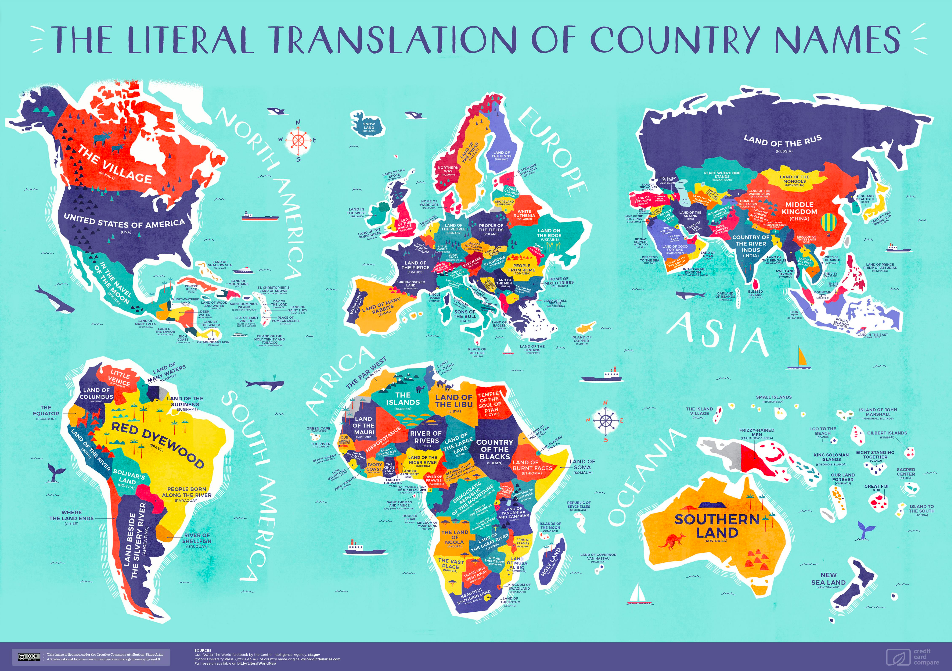
Created by Credit Card Compare, this enlightening map shows you the literal translation of every country’s name. Some countries are named after geological characteristics of the land. For example, Andorra means “Shrub-covered Land”, India is the “Country of the River Indus”, and Portugal translates to “Warm Port.” There are also countries named after animals: Spain is called “The Land of Many Rabbits”, Kosovo is the “Field of the Blackbirds”, Albania is the “Land of Eagles”, and Mali simply translates to “Hippopotamus.”
Other countries are named after the people who live on it. Russia is “Land of the Rus”, Mongolia is “Land of the Mongols”, and Bangladesh translates to “Land of the Bengalis.” Some are named after a characteristic of the people rather than what they are called, like Macedonia (“The Land of Tall People”), Estonia (“Waterside Dwellers”), and Ethiopia (“Land of Burnt Faces”).
Other names give a glimpse to the country’s history and mythology. For example, Thailand means “Land of the Free” because it has never been conquered by Western colonizers unlike its neighboring countries. Bhutan is called “The Land of the Thunder Dragon”. This myth originated from a buddhist sect leader who, according to traditional accounts, heard thunder like the roar of a dragon while he was building a monastery in the midst of a storm. The Thunder Dragon also appears on the flag of Bhutan.
Countries which were colonized received names from the colonizers. Some are based on observations about the locals—Papua New Guinea means “Frizzy-Haired Men” in the Malay language—and some are simply named after Western royals. The Philippines was named after King Philip II of Spain by Ruy López de Villalobos, as our history books taught us in elementary.
The literal translations of each country’s name is very interesting, and some are even poetic. Mexico translates to “In the Navel of the Moon”, for example, and Argentina means “Land Beside the Silvery River.” A lot of the translations will also make you want to learn more about the country’s history and how they got their names. Why is Kyrgyzstan named “Land of the Wanderers”? What’s behind the name of Botswana, which translates to “Those Who Went Away”?
An interactive version of the map that allows you to zoom in for more details can be seen here. Check out each continent below:
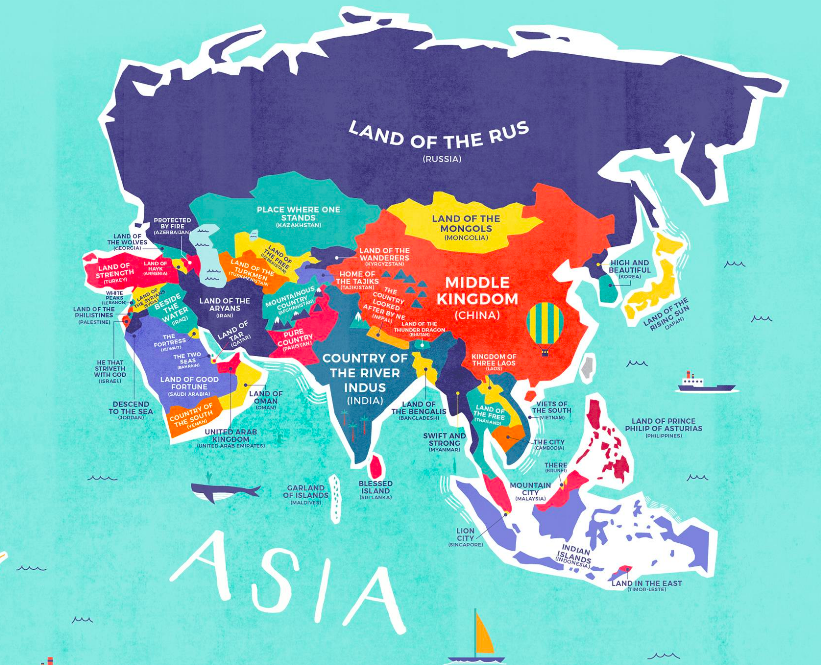
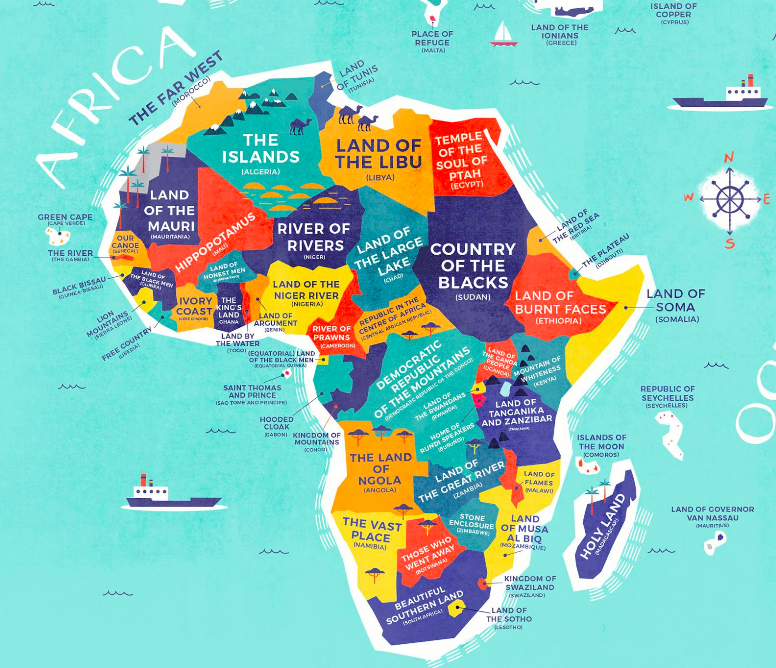
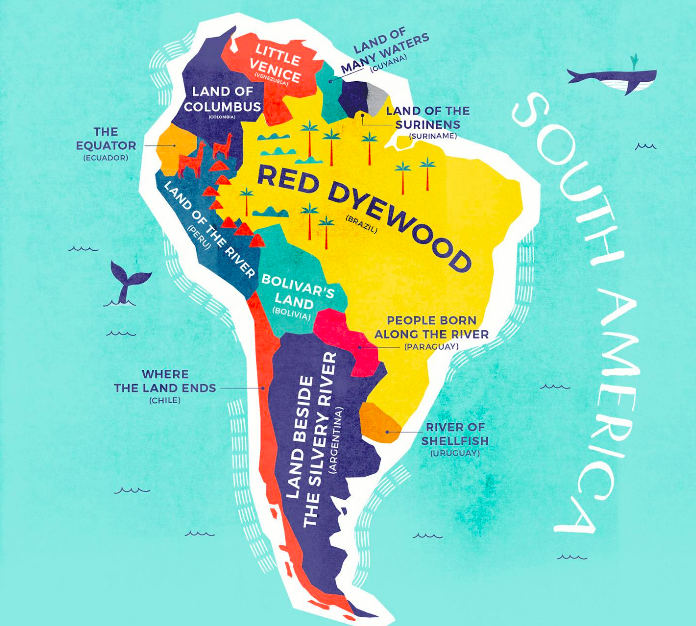
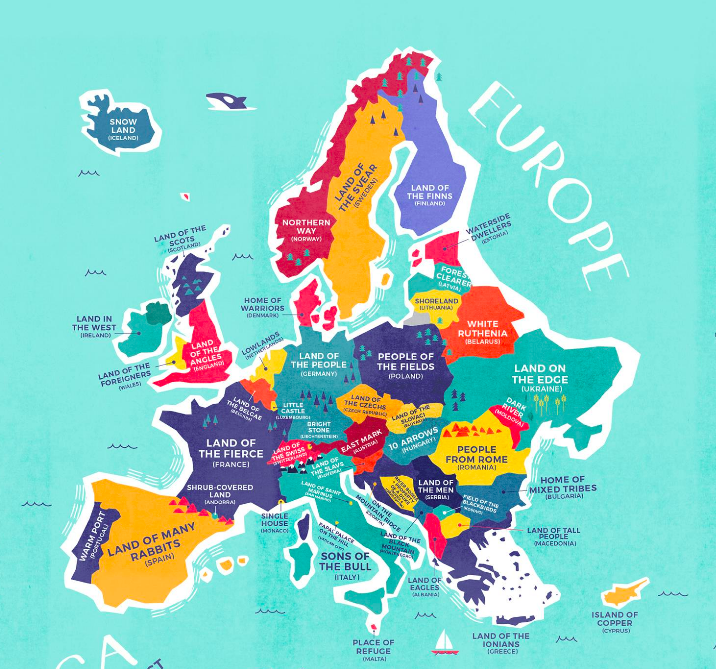
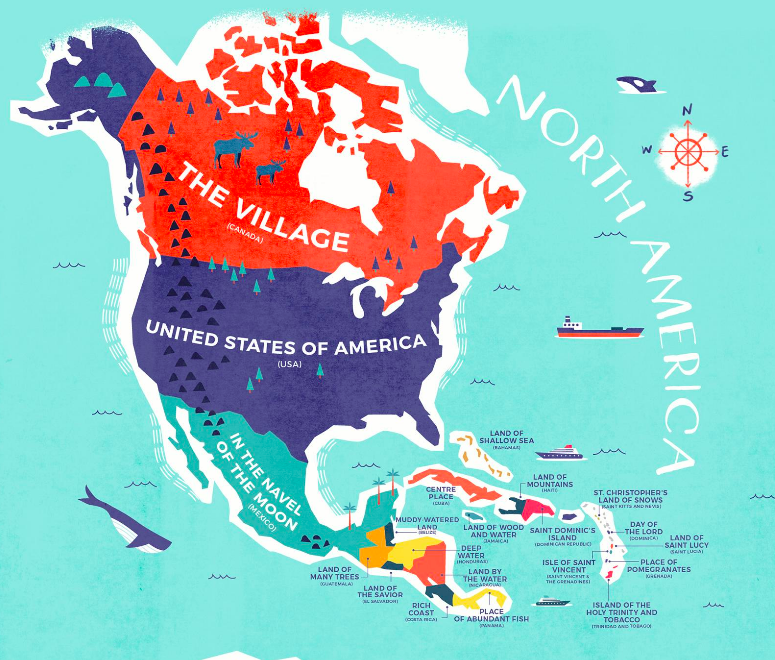
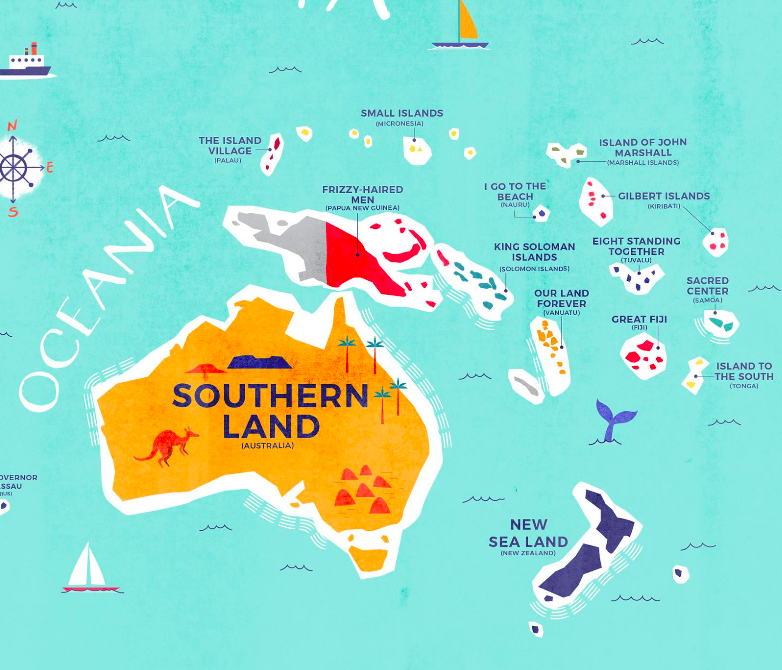
Read more from InqPOP!:
Studio places 84 statues on their roof, one for each man that commits suicide in the UK every week
Flat Earther attempts to prove Earth isn’t round, blasts off in homemade rocket
Graffiti and copyright: Why big brands can’t just use street artists’ work without consent
Mom shares 3-yr-old’s severe allergic reaction to kids’ makeup
‘Unstoppable’ young woman takes care of her baby during university entrance exam
How a woman’s quest for Instagram fame left her with thousands in debt
London installs pollution-absorbing ‘bench’ as effective as 275 trees
LOOK: College student from viral photo now models for a top fashion brand

